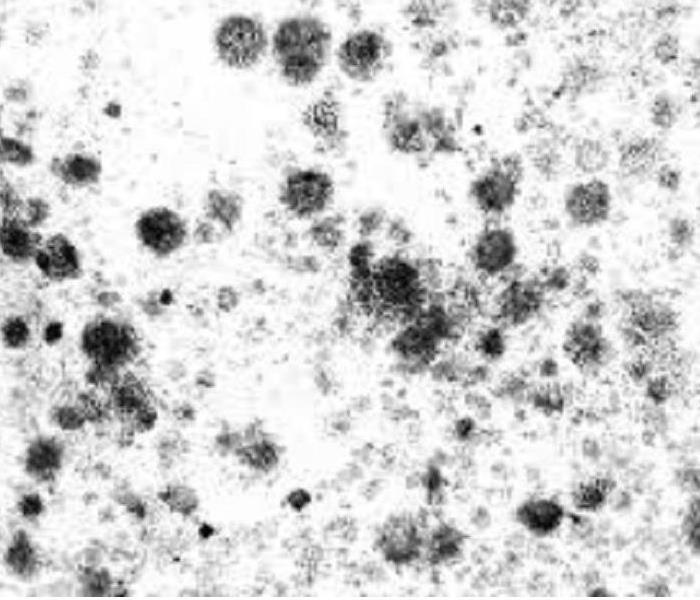What is Black Mold?
6/14/2018 (Permalink)
Finding mold in your home, or suspecting that you have a mold problem, can be a scary feeling. We are bombarded with stories about the devastating effects that mold can have on our health and the air quality inside our homes. Before you begin the process of trying to remove the mold, it is important to understand some basic mold facts.
There are several different types of mold. Although many types of mold are capable of producing allergens and irritants, it is black mold (or Stachybotrys chartarum) that is more well known for producing spores that may cause health effects.
If you suspect you may have a mold problem, keep in mind that any type of mold found in the home should be treated with caution. Do not touch or disturb the mold to avoid inadvertently spreading it around your home.
When you contact SERVPRO of Hamilton County, our trained professionals will assess your unique situation. Mold grows and thrives in moist areas, so any sources of water or moisture will be addressed. Although every mold situation is unique, the process of removing mold is as follows.
Understanding The Mold Remediation Process
Step 1: Emergency Contact
The mold cleanup and restoration process begins when you call SERVPRO of Hamilton County at 317-773-0422. Our representative will ask a series of questions to help us determine the necessary equipment, resources, and personnel.
Step 2: Inspection and Mold Damage Assessment
Our trained professionals will carefully inspect your property for visible signs of mold. Mold feeds on cellulose and water and can be hidden from plain view. We use various technologies to detect mold and hidden water sources.
Step 3: Mold Containment
We use various containment procedures to prevent the spread of mold. We may use advanced containment procedures like negative air chambers to isolate the contaminated area with physical barriers and negative air pressure to keep the mold spores from spreading during the cleanup process. All fans and heating and cooling systems will be turned off to prevent the spread of mold.
Step 4: Air Filtration
Our specialized filtration equipment allows our professionals to capture microscopic mold spores out of the air. We utilize powerful “air scrubbers” and HEPA vacuums to prevent the spread of these mold spores while the mold remediation is in process.
Step 5: Removing Mold and Mold-Infested Materials
The mold remediation process depends on the amount of mold growth and the types of surfaces on which the mold appears. Our restoration specialists use antifungal and antimicrobial treatments to eliminate mold colonies and to help prevent new colonies from forming. Removing and disposing of mold-infested porous materials, like drywall and carpeting, may be necessary to remediate heavy mold growth.
Step 6: Cleaning Contents and Belongings
Our specialists will clean your furniture, decorative items, curtains, clothing, and other restorable items affected by mold. We use a variety of cleaning techniques to clean and sanitize your belongings. We're also trained to remove odors and deodorization using fogging equipment.
Step 7: Restoration
Depending on the level of mold damage, drywall, subfloors, and other building materials may be removed. Restoration may involve minor repairs, such as replacing drywall, painting, and installing new carpet; or it may entail major repairs such as the reconstruction of various areas or rooms in a home or business.
We understand that finding mold in your home is scary. Our goal is to give you the peace of mind of knowing that your home is safe and healthy. Call SERVPRO of Hamilton County at 317-773-0422 today if you have concerns about mold.




 24/7 Emergency Service
24/7 Emergency Service
